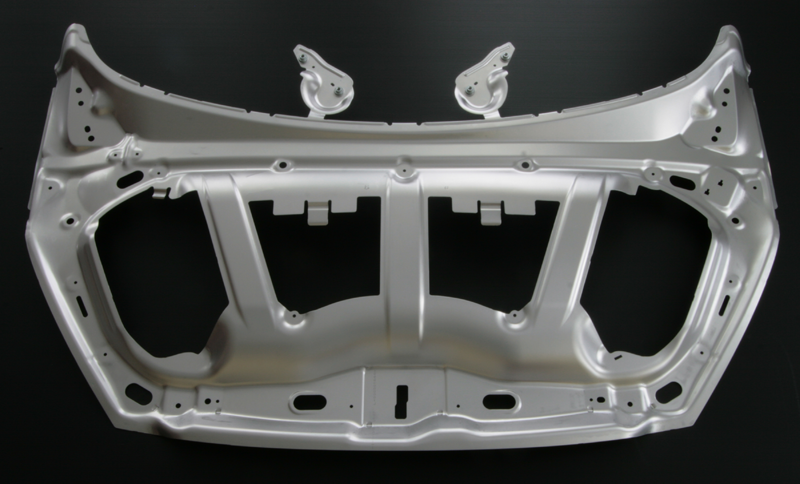
Sheet metal fabrication plays a crucial role in the development of enclosures, brackets, and custom parts across automotive, electronics, aerospace, and medical industries. However, even a slight design or production oversight can result in costly rework, production delays, or complete part failure.
To help engineers, designers, and manufacturers reduce risks, this guide highlights the most common mistakes in sheet metal fabrication—and how you can avoid them with the help of experienced partners like Boona Prototypes.
I. Designing Without Sheet Metal Manufacturing in Mind
One of the most common mistakes is designing parts as if they’ll be machined rather than bent and formed.
Examples of Design Oversights:
| Design Feature | Risk Without DFM Consideration |
|---|---|
| No bend allowance | Incorrect final dimensions |
| Sharp inside corners | Cracking or stress accumulation |
| Features near bends | Deformed holes or cutouts |
Tip: Boona Prototypes offers DFM (Design for Manufacturability) reviews to ensure your designs are optimized for fabrication. Learn more on their sheet metal services page.
II. Incorrect Material and Finish Selection
Choosing the wrong material or finish can compromise durability or increase production costs. For instance, using cold-rolled steel without corrosion protection in outdoor settings will lead to rust and early failure.
Material Comparison Table:
| Material Type | Properties | Recommended Applications |
|---|---|---|
| Aluminum 5052 | Lightweight, corrosion-resistant | Enclosures, brackets, marine parts |
| Stainless Steel 304 | Strong, corrosion-resistant | Food, medical, and consumer products |
| CRS Steel | Cost-effective, unfinished | Structural frames (requires coating) |
✅ Boona Prototypes supports a wide variety of materials and finishes including anodizing, powder coating, and plating.
III. Overlooking Tolerances and Bend Radii
Tight tolerances can be critical—but excessive precision on non-critical features drives up costs and increases rejection rates.
Recommended Sheet Metal Tolerances:
| Feature Type | Standard Tolerance |
|---|---|
| Bend Angle | ±1° |
| Hole Diameter | ±0.005″ – 0.010″ |
| Cut-to-Edge | ±0.010″ – 0.020″ |
| Overall Dimensions | ±0.020″ – 0.060″ |
Boona Prototypes uses high-precision CNC bending and laser cutting systems to meet industrial-grade tolerance demands. Visit their capabilities page for more details.
IV. Poor Hole Placement and Feature Layout
Holes placed too close to edges or bends often deform during forming operations.
Hole Placement Guidelines:
| Feature | Minimum Distance (Recommended) |
|---|---|
| Hole to Edge | ≥ 2 × material thickness |
| Hole to Bend Line | ≥ 3 × material thickness |
| Slot Length | ≤ 5 × slot width |
V. Ignoring Welding Constraints in Assembly Design
If you don’t plan for weld accessibility and joint design, you may end up with weak connections or time-consuming reworks.
Assembly and Welding Tips:
-
Avoid welding on very thin sheets (< 1 mm) unless necessary.
-
Allow at least 180° tool access for weld seams.
-
Clearly mark fastener locations and weld types in drawings.
Boona Prototypes’ end-to-end assembly services ensure strong and clean welds for aluminum, steel, and stainless sheet metals. Learn more about welding and prototyping options.
VI. Not Prototyping Before Production
Skipping prototyping is a gamble, especially for custom enclosures or complex assemblies. Without prototyping, hidden interferences or tolerance stack-up issues often go unnoticed.
📦 Boona Prototypes specializes in rapid prototyping for sheet metal—from single prototypes to small batch runs—ensuring full validation before mass production. See their rapid prototyping solutions for details.
VII. Conclusion: Eliminate Errors, Save Costs
Avoiding these mistakes is essential to reducing lead time, improving part quality, and staying on budget. Working with a reliable and experienced team like Boona Prototypes empowers you to:
-
Optimize your designs with DFM input
-
Select the right materials and finishes
-
Prototype, test, and iterate before scaling
-
Fabricate with tight tolerances and advanced machinery
👉 Visit Boona Prototypes to request a quote or explore their full suite of CNC machining, sheet metal fabrication, and rapid prototyping services tailored to your needs.
FAQs
1. What are the most common design mistakes in sheet metal fabrication?
Typical mistakes include neglecting bend allowances, placing holes too close to bends, using sharp internal corners, and ignoring tolerances. These can result in warping, cracking, or parts that don’t fit as intended.
2. How can I avoid errors in material selection for sheet metal projects?
Choose materials based on mechanical strength, corrosion resistance, and formability. For example, aluminum 5052 is ideal for marine applications, while stainless 304 is best for hygienic environments. Always consult with your fabricator early.
3. Why is bend radius important in sheet metal design?
Using an incorrect bend radius can cause material cracking or deformation. The inside bend radius should typically match or exceed the material thickness.
4. What is the K-factor and why does it matter?
The K-factor accounts for material stretching during bending. It affects flat pattern development. Incorrect use of the K-factor leads to improper final dimensions.
5. What is the minimum distance between a hole and a bend in sheet metal?
A common rule is at least 3× the material thickness to prevent hole distortion during bending.
6. Why should I prototype sheet metal parts before full production?
Prototyping identifies issues with fit, tolerances, and assembly that may not be visible in CAD. It saves time and cost before mass production.
7. Can I request a DFM review for my sheet metal part?
Yes. Many manufacturers like Boona Prototypes offer free DFM (Design for Manufacturability) reviews to optimize your design for fabrication and avoid costly revisions.
8. How do I avoid finish or coating problems in sheet metal parts?
Plan for added thickness from coatings like powder coating (~0.003–0.005″ per side) and ensure features like slots or fasteners won’t interfere after finishing.
9. Are tight tolerances always necessary in sheet metal design?
No. Over-specifying tight tolerances can increase cost and lead time. Apply tight tolerances only where functionally necessary.
10. What services can help reduce fabrication errors?
Services like CNC laser cutting, bending, welding, DFM consultation, and rapid prototyping from Boona Prototypes help ensure your parts are made correctly and efficiently.



